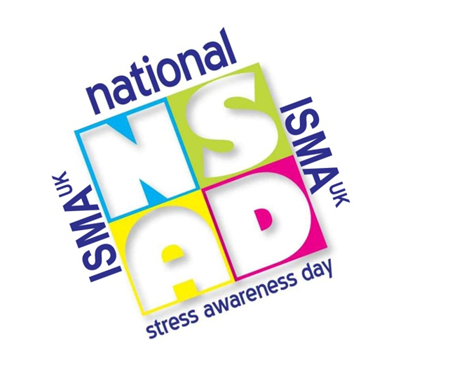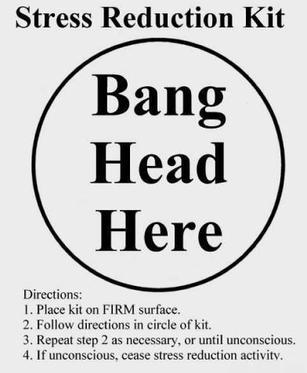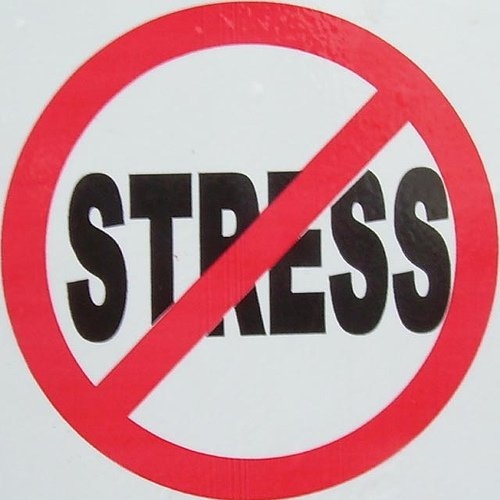Stress Awareness Day 2024 is on Tuesday, November 5, 2024: 5 Physical responses to stress?
Tuesday, November 5, 2024 is Stress Awareness Day 2024. National Stress Awareness Day (NSAD) National Stress Awareness Day
As an Amazon Associate I earn from qualifying purchases.

Stress influences us all, and no more so compared to in the workplace. The chemicals, adrenaline and hormones which develop in our systems in response to the pressures of day-to-day life have no chance to dissipate in our modern lives, and the impacts of this could be serious sufficient to cause considerable bodily and psychological harm.
Stress Awareness Day intends to advertise understanding of these particularly modern obstacles, and to assist people and organizations in altering behaviors and way of lives which might cause too much stress.

Stress is a natural human response seemingly occurring in situations where internal or external stimuli are perceived as threatening or extending beyond one’s ability to cope. It is important to realize and consider that a short amount of stress is actually healthy for the human condition, as it promotes motivation and has an increase on the body’s physical and mental stamina, leading individuals to be able to maintain a certain amount of self-control and self-persuasion. Healthy stress is frequently coined “eustress”.
However, unhealthy stress is when the stress response seems to occur more frequently than normal for the average individual, and when such an episode seems to run longer than normal and have a heightened intensity, making the individual more sensitive to their environment and encounters the “fight-or-flight” response. Stages of unhealthy stress are known as “distress”. Irrational fears and racing thoughts almost always accompany unhealthy stress.
Healthy and unhealthy stress will start to show signs that are often very similar across the same spectrum, but differ from the individual.
(Physical)
(Negative symptoms)
-Headaches and migraines
-Lack or increase in appetite
-Weight gain or loss
-Sleeping too little (insomnia) or too much (hypersomnia)
-Upset stomach and digestive complaints
(Positive signs)
-Positive facial expressions
-Correct posture and body language
-Normal voice pitch
-Maintaining eye contact and confident appeal
-Breathing regularly
(Behavioral)
(Negative symptoms)
-Isolation from family, friends and members of the community
-Lack of interest and/or pleasure in activities that were once the source of enjoyment
-Affirming negative remarks and statements
-Self-neglect (i.e. not showering, dressing, eating, sleeping properly or according to normal schedule)
-Procrastination and avoiding responsibilities
-Gradually identifying working on fears
-Exploring other activities and alternatives
-Making mistakes, identifying, accepting and correcting them
-Brief summary of progress or sharing accomplishments with others
-Making notes and recordings
See above, gives a relatively good description of some of the physical and behavioral factors one may go through when confronted by either eustress or distress. It is important however to be aware of the signs and symptoms your body may be experiencing beforehand or during and after the perceived threat that stimulates the stress response, in order to see how it may be effecting you. If you are having trouble with dealing with stress and it seems like it is becoming too overwhelming and taking control of your life, than stress management is a good way to manage the symptoms of a stress response.
Managing stress may be done by the following:
-Slow breathing techniques for a minimum of 3 minutes, preferably several times a day
-Drinking lots of water and fluids (as water intake regulates mood swings, making you feel happier)
-Eat plenty of fruits and vegetables, and try to consume a varied diet with nutritionals calories
-Get a good amount of sun exposure, and physical exercise for at least half an hour a day
-Meditation
-Herbal teas and remedies
-Massage and aromatherapy
-Homeopathy and other soothing practices
-Cold or warm baths/showers
-Maintaining an ordinary sleep pattern (going to bed and waking up at the same times each day)…you can use an alarm clock to slowly weave yourself back into a routine
-Take up a hobby
-Chew gum
-Gain awareness of your body’s natural senses (sight, sound, taste, touch, smell)…use these to adapt to your environment
-Spending time with nature
-Natural medicine
-Peace and tranquil music
-Spending quality time with pet
-Artistic or musical expression
-Sport and recreation
-Yoga
-Cognitive function
-Maintaining work/life balance
-Mindfulness
-Social activity and community groups
-Chocolate bars may stimulate energy levels (but don’t overindulge on eating the same foods, particularly if it is high in sugar and fat content)
-Stress balls
-Lavender and other essential oils
-Adequate rest and activities that incite escapism as a form of relaxation and distraction (i.e. reading, watching television, movie, drawing, being artistic and creative)

stress among mba students?
Stress, it’s a part of student life. University is an unending stream of papers, assignments and midterms; the never-ending flow of information that needs to be processed can become overwhelming. Stress is normal and can keep you on track with schoolwork, but if stress is preventing you from focusing or maintaining a healthy lifestyle it can be a problem.
Stress can come from a variety of sources both inside and outside of school, from heavy workload and difficulty managing one’s time to financial problems and difficulty with family. We are all likely to be “stressed out” at some point in our university careers. But how do we know when we are beyond the threshold of the stress intrinsic to the pursuit of a university degree? There is no answer to this question, as how we react to stress is a varied as the individual.
So, what are the symptoms of stress? What immediately comes to mind is the cartoon image of someone with unkempt hair, bloodshot eyes and a cup of coffee, but this is not entirely accurate. The symptoms of stress can be physical, emotional, and mental. Some physical symptoms are heart pounding, headaches, sweaty palms, indigestion, sleeplessness, and tight stomach; things likely to prevent one from attending class. Emotional symptoms include being irritable, depressed, anxious, hostile, or nervous. Things that make it difficult to work with others. The mental symptoms of stress show as forgetfulness, loss of concentration, poor judgment, disorganization, confusion, and negative self talk. The type of things that make it hard to work in general. We are here at university to work and earn degrees, which is hard to do if you are not feeling well enough to attend class, unable to work effectively in groups, and unable to get work done in general.
So how does one manage stress? The Canadian Heart and Stroke Foundation recommends a 12-step approach:
1. Give yourself a break: go for a walk or get a good night’s sleep, be away from it all for a few hours.
2. Eat a healthy diet and avoid things like alcohol, caffeine and tobacco.
3. Talk to someone about it – your friend or family.
4. Spend time with friends and family, doing something you enjoy!
5. Take a fun elective or one of the McMaster Extra-Curricular Studies courses like sign language, which can take you mind off of school for a while.
6. Relax with a book or a movie or by listening to some music.
7. Exercise. Join The Pulse, go for a jog, dance, take a bike ride or organize a game of pickup hockey or basketball.
8. Set priorities and eliminate things that will unnecessarily cause you stress.
9. Schedule your time, get a day planner and keep track of everything, this way nothing can creep up on you.
10. Find alternative sources of satisfaction, like volunteering.
11. Increase your awareness of what causes you stress, and find information on how to develop new skills or ways to deal with it. A professional can help. On campus, visit the Centre for Student Development or Campus Health Services, both of which are located in the basement of the student center.
12. Take Action! If someone or something is bothering you, address the person or situation that is causing you stress.
This is only a guide, there are many ways to relax and lower your stress level. Find what works for you and stick to it.

how to overcome stress??
I work in a high stress job and use secular forms of meditation practice to help me to alleviate stress and anxiety.
Meditation is simply learning to live in the moment, when nothing distracts you and when you are not tied to the past or anxious about the future. In meditation you become peacefully aware of your real self. The more you use it, the more aware you become. When you learn to live life for each moment, to enjoy and appreciate life to the fullest at that moment, you suddenly become impervious to the myraid of doubts and fears that you've lived with all your life.
While there are many folks that seem to believe their particular mantra has "magical power", it really is the mindfulness that matters. The mantra is just one of the vehicles you can use to get there.
I developed a simple nonsectarian practice, but my background is in Buddhism - specifically Jodo Shinshu (aka Shin) Buddhism, Nichiren Buddhism, and the nonsectarian teachings of the Bright Dawn Institute (aka Kubose Dharma Legacy).
Here is the simple, yet potent, meditation technique that I use with some recommended resources as well. Specific posture does not matter. If you are uncomfortable sitting on the floor, you can sit on a chair with feet flat on the floor.
Since I have medical issues, I do a simple form of secular mindfulness meditation to relieve stress and anxiety. This helps to reduce high blood pressure and the frequency of headaches. It is a practice recommended by my primary licensed physician and is not encumbered by any superstitious nonsense.
I have actually studied a wide variety of religions and paths. Being more musically inclined, I was initially attracted to the practices of Jodo Shinshu (aka Shin Buddhism) and Nichiren Buddhism - with the combination of chanting a rhythmic phrase (Nembutsu or Odaimoku) and/or sutra recitation to a visual object (a scroll of Amida or a Gohonzon). This is a more active form of meditation as compared to the silent form (see below for that). So I decided to create a nonsectarian alternative in that vein. One practice that I find helpful in the vein of the Way of Oneness (the realization of interdependence) is to chant “Be One, Be Peace” in a position of gassho (palms together in front of chest with fingers pointing upward - a traditional gesture of respect) to an object such as a Dharma Wheel or a drawing of enso (a circle - you can paint one on a while sheet of paper with a Chinese style brush - traditionally the circle is not fully enclosed - just do a Google search on enso to see examples) as used in Zen. Five minutes of this every morning before work does wonders for my blood pressure and stress level.
You are more than welcome to use the chant if you think you may find it possibly useful.
I use two forms: “Be One. Be Peace.” for those who prefer a four syllable “mantra” like “Namandabu.” Or “Be One. Be Love. Be Peace.” for those who prefer the pace of a six syllable “mantra” like “Nam(u) Myo-ho Ren-Ge Kyo” or “Na-Mu A-Mi-da Butsu.” People who like (or are drawn) to chant are attracted to the rhythm.
For me, the purpose of any practice is to encourage self-reflection, internalizing this awareness , and wonder/gratitude/awareness of the interdependent forces of the Universe (Dharmakaya - in Shin this is symbolized as Amida Buddha which allows practitioners to perceive these forces as “compassionate” and “caring” thus allowing us to relate to them easier, or as the Gohonzon in Nichiren Buddhism which is a calligraphic representation of the “Ceremony in the Air” from the Lotus Sutra which is also a representation of the interdependent forces of the Universe).
There are a couple of simple techniques for silent meditation as well. You do not have to sit on the floor. You can sit with erect back on a chair. Many people say try for 15 minutes twice a day. I say start with a simpler goal - 5 minutes twice per day. The benefits include stress management and relaxation benefits which help the body, increased mindfulness and focus, and increased energy. The mindfulness can be a benefit to your spiritual life, but meditation also has "non-spiritual" benefits. Here are two easy techniques:
Breathing meditation - 1) Check posture. 2) Close your eyes and relax. 3) Focus on your breath entering and leaving your body. 4) Count breaths mentally one to four. Repeat. 5) Don't fight a wandering mind, but calmly direct it back to task. 6) Sit for a minute afterwards.
"Mantra" technique (choose a personal "calm" word or phrase that you will repeat in your meditation - it can be from your religion or something as simple as "one" or "calm" – I use the nonsectarian “Be One. Be Peace” or “Be One. Be Love. Be Peace.”) - 1) and 2) as above in the Breathing meditation. 3) Listen to your breathing and let it relax you with each breath. 4) Once you are relaxed, mentally "hear" your "calm" word or phrase in your mind. Let it repeat in your mind. 5) Don't fight a wandering mind, but calmly direct it back to task. 6) Sit for a minute afterwards.
That is all there is to these very simple but beneficial meditation techniques. Many people think that something "mystical" should happen during meditation. Most often "nothing" happens and "nothing" should be expected.
Oh yes, and it didn't cost me anything to learn nor were there any "initiations" involved.
Some good resources on "secular" meditation are "The Calm Technique" by Paul Wilson as well as "The Relaxation Response" by Herbert Benson. If you need more formal "assistance" or "training" then I would look into Natural Stress Relief which was founded by former Transcendental Meditation instructors upset at the rising cost and ongoing superstition associated with TM. They charge $47 for their training compared with the $2,500 that TM would charge you.
Also look at these websites on Buddhism on the nonsectarian Bright Dawn teachings which have a heritage of Shin and Zen Buddhism:
I hope these are helpful!










